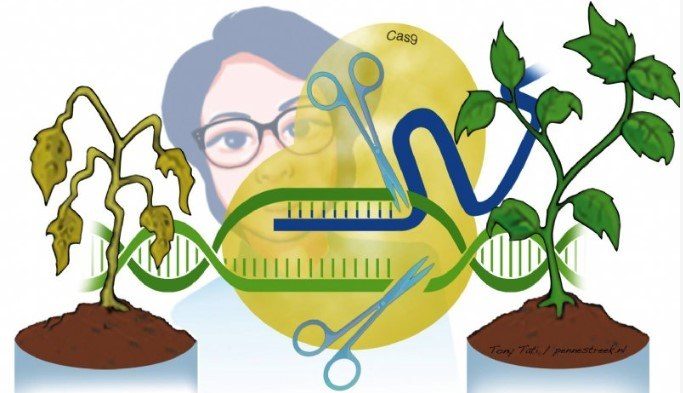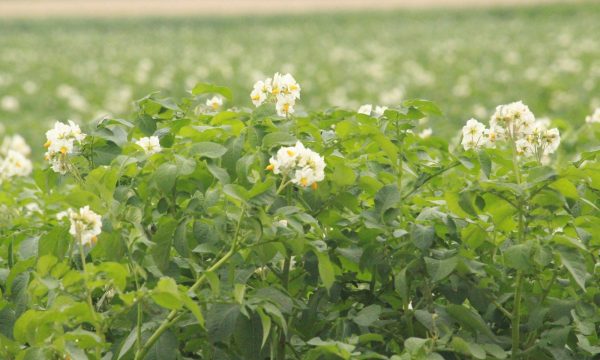Press release No, the world is not going to end now that CRISPR is GMO in Europe, but ...

"That’s really too bad!", was a repeated reaction from the research and agriculture world to the judgment of the European Court of Justice on CRISPR or 'gene editing'. Plant varieties developed with a CRISPR-modified ancestor and all food and feed produced from it now fall under the existing, extremely strict and expensive EU procedure for GMO registration.
As ILVO, Flanders Research Institute for Agriculture, Fisheries and Food, we are deeply involved as researchers and as breeders. ILVO has a long tradition of breeding several agricultural crops. Disease resistance, drought resistance, climate robustness, non-allergenicity, digestibility, taste, yield, vigor, nutrient use, etc. are all characteristics that we aim to incorporate in a targeted manner using knowledge of the genetics of the crop and an arsenal of breeding techniques. Breeding (improving certain characteristics in subsequent generations) is always aiming for precise, desired changes in the DNA, while maintaining the many existing good qualities of the parent lines. The breeder's hand is by no means the only source of these changes. DNA is not static. "Mutations" are constantly happening in every living thing.
What happens now that CRISPR has GMO status?
1. Not that all breeding stops or becomes impossible. 'Gene editing' is one tool in our toolbox. There are alternative ways for most objectives – too bad that those are less precise and accurate and more time-consuming. It is like finding your way using a map. You get there, but using a GPS is easier and usually faster.
2. Not that the biological basis or the purpose of our breeding programs changes. ILVO continues to draw on interesting characteristics from recent and older varieties, and in many cases from plants that occur in nature and that have adapted themselves (their DNA) to specific environmental conditions. ILVO is constantly tracking society’s needs and wishes to translate all predictable future challenges into useful plant features. Years ago, we had already started drought resistance breeding in various crops.
3. Not that ILVO now ends up in some kind of 'camp'. Frankly speaking, the polarity set up in debates between biotechnological supporters and so-called 'classical' breeders, does not exist in practice. The idea that a ‘classical’ breeder works intuitively by random crossings of a father line + mother line = and selecting strong offspring using the naked eye' is a myth. The professional breeder uses molecular analyses and complex lab techniques to unite cells or to double plant DNA.
No worries? Oh yes worries!
1. No monitoring of market access. What happens at the European borders? Someone imports a batch of soy, for instance, without saying that CRISPR was used. Europe then performs random checks to see whether the GMO law has been followed. A sample goes to a certified lab. ILVO carries out the necessary analyses for the Belgian government as a 'National Reference Laboratory for GMO Detection' (together with a Walloon and a federal institute). If it turns out to be a non-GMO, there is no need for additional labeling. Authorized GMOs may cross the border with the correct formulations on the label. If it concerns a GMO product that is not on the EU list 'authorized GMO', then the cargo may not enter Europe. In GMOs prior to the CRISPR generation, we know exactly which markers in the genome we need to look for. However, CRISPR GMOs cannot be distinguished. The mutations in the DNA look the same, whether they have taken place via CRISPR, via a mutagenesis technique that does not fall under GMO status, or via natural evolution. In other words, CRISPR leaves no ‘scar’. The (current?) non-traceability of CRIPSR looks to us like a big problem. The legislator wishing to enforce these new GMO rules will have to look for solutions.
2. Product or process? On other continents, they assess the safety of new plant varieties by testing the end PRODUCT. This time, the European GMO legislator opted to approach plant safety using a PROCESS- as well as PRODUCT-orientation. Which techniques do we consider safe as a matter of course? And which techniques have to prove over and over again that they are safe? Scientifically, an increasing number of comments can be made about this distinction and the definitions used. According to ILVO, a more product-oriented safety approach is a path worth considering.
3. Blinkers on? Could it be that most Europeans - based on the affordability and especially the abundance of food in the last 50 years - assume that there will always be enough food available? And therefore it’s no big deal to deny food producers and breeders a useful technique? No need for fear-mongering. We at ILVO simply believe that we will need all available tools in breeding to continue to meet the demands of the European people: to simultaneously produce more food, for more people worldwide, who will eat more plant-based and more diverse dietary and health needs, on less agricultural land, with fewer external inputs (manure, pesticides, etc.) and in a more extreme climate.
It's really too bad, then, to regulate the implementation of CRISPR in plant breeding in such an expensively strict manner.
In the name of the ILVO researchers:
Joris Relaes,
Lieve Herman,
Kristiaan Van Laecke,
Isabel Roldán-Ruiz,
Johan Van Huylenbroeck,
Marc De Loose


